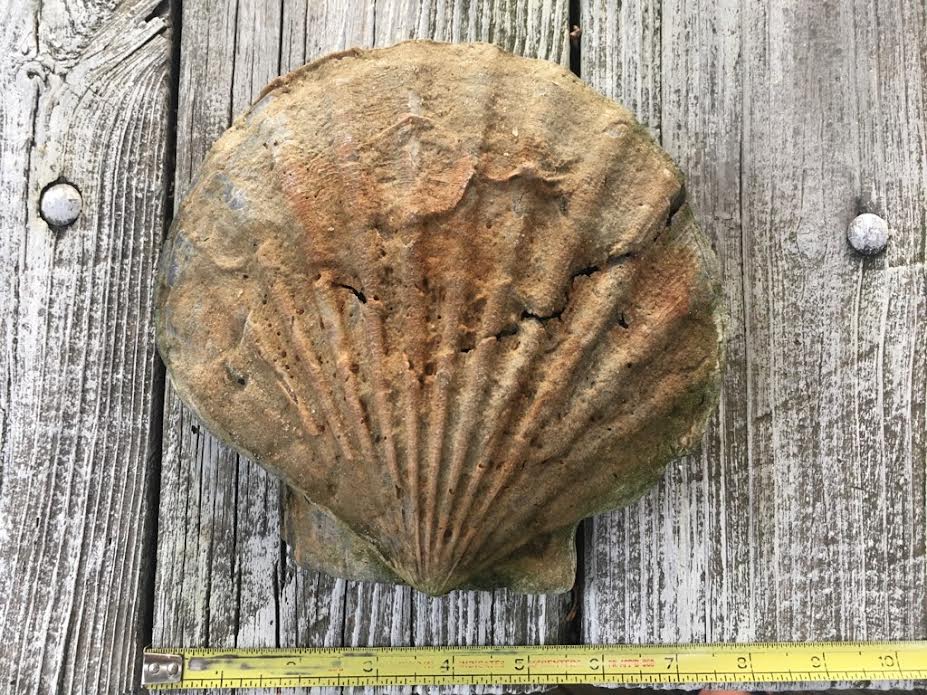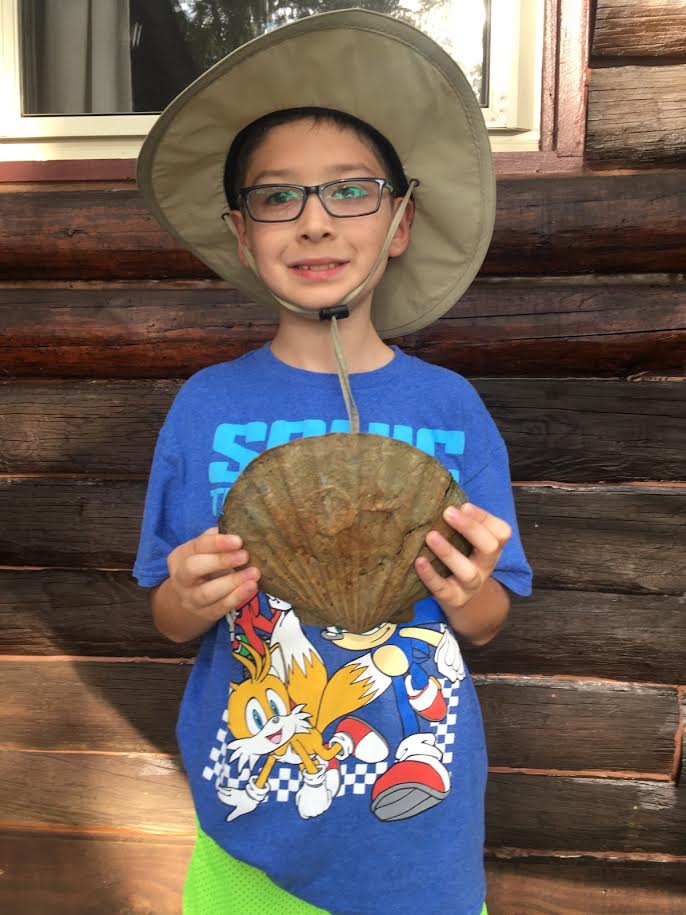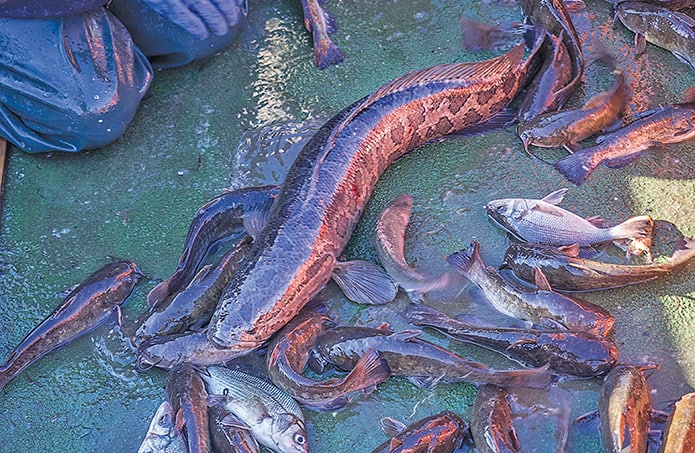Isaac Griffin, 10, of Athens, Tenn. got the surprise of his life last week when he found a millions-of-years-old intact 7 1/2″ wide scallop shell in Urbanna Creek.
The ancient shell is from the Miocene era ,which extended from 5 to 23 million years ago, and is named Chesapecten middlesexensis after Middlesex County, Va., the county where Urbanna Creek is located.
During his fall school break, Isaac was visiting his great-aunt and uncle, Kerry and Dr. Jim Robusto of Urbanna, when Dr. Robusto and Isaac went mud-larking along the creek’s shoreline. Isaac spotted the big shell. “I had already picked up some smaller (scallop) shells when I saw the big one,” said Isaac. “I did not realize how big it was until I got it up.”
In 1936, paleontologist Wendell C. Mansfield of the U. S. Geological Survey, at the Smithsonian Institute in Washington
D. C., visited Urbanna Creek and discovered a large extinct species of scallop that he named Chesapecten middlesexensis.

Mansfield had visited the creek banks earlier in 1929 and found a new species of shell then, which he had named Carolinapecten urbannaensis, after the Town of Urbanna. Along some areas of the high banks on the south side of the Rappahannock River and on the south bank above the bridge on Urbanna Creek clusters of Miocene era fossil shells can be found.
Between 2009-2017, paleontologists Edward J. Petuch and Mardie Drolshagen routinely visited Urbanna Creek and found 12 species of shells that had never been scientifically identified.
Petuch and Drolshagen wrote a book, Molluscan Paleontology of the Chesapeake Miocene published in 2010 that stated 20 million years ago, Urbanna and Middlesex County were in the middle of a body of water called the Calvert
Subsea. The Miocene era was a time of wildly fluctuating climate here, when the Chesapeake Bay region went though subtropical, cold, and temperate periods, they wrote. This resulted in rapid evolution and extinction of species found today in large deposits of fossil shells that are visible in exposed and eroded river and creek banks and at the bottom of wells in Middlesex County.
Isaac, who returned to Tennessee last week, said, “I’m taking my shell home and I’m going to take it to school for show and tell,” he said.
Certainly, this will make a great science lesson for Isaac’s classmates and his fall break to Urbanna will be one he will
never forget.
-Larry Chowning




